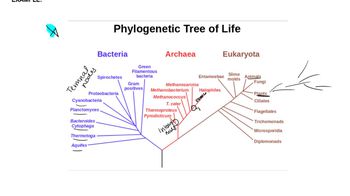Table of contents
- 1. Introduction to Genetics51m
- 2. Mendel's Laws of Inheritance3h 37m
- 3. Extensions to Mendelian Inheritance2h 41m
- 4. Genetic Mapping and Linkage2h 28m
- 5. Genetics of Bacteria and Viruses1h 21m
- 6. Chromosomal Variation1h 48m
- 7. DNA and Chromosome Structure56m
- 8. DNA Replication1h 10m
- 9. Mitosis and Meiosis1h 34m
- 10. Transcription1h 0m
- 11. Translation58m
- 12. Gene Regulation in Prokaryotes1h 19m
- 13. Gene Regulation in Eukaryotes44m
- 14. Genetic Control of Development44m
- 15. Genomes and Genomics1h 50m
- 16. Transposable Elements47m
- 17. Mutation, Repair, and Recombination1h 6m
- 18. Molecular Genetic Tools19m
- 19. Cancer Genetics29m
- 20. Quantitative Genetics1h 26m
- 21. Population Genetics50m
- 22. Evolutionary Genetics29m
22. Evolutionary Genetics
Phylogenetic Trees
Problem 9
Textbook Question
How can ancient DNA provide insight into past migrations that analyses of extant human genomes fail to uncover?
 Verified step by step guidance
Verified step by step guidance1
Ancient DNA (aDNA) provides direct genetic evidence from individuals who lived in the past, allowing us to study genetic diversity and population structure at specific points in time.
By analyzing aDNA, researchers can identify genetic markers and haplogroups that may have been lost or diluted in modern populations due to genetic drift, natural selection, or population bottlenecks.
Ancient DNA can reveal migration patterns by showing the presence of genetic lineages in regions where they are no longer found in modern populations, indicating past movements and interactions.
Comparing aDNA with modern genomes helps to identify changes in allele frequencies over time, providing insights into how populations have adapted to environmental changes or cultural shifts.
Ancient DNA studies can uncover admixture events between populations that are not evident in modern genomes, as these events may have been obscured by subsequent migrations and genetic mixing.
Recommended similar problem, with video answer:
 Verified Solution
Verified SolutionThis video solution was recommended by our tutors as helpful for the problem above
Video duration:
2mPlay a video:
Was this helpful?
Key Concepts
Here are the essential concepts you must grasp in order to answer the question correctly.
Ancient DNA (aDNA)
Ancient DNA refers to genetic material extracted from archaeological remains, such as bones or teeth, that are thousands of years old. This type of DNA provides a direct glimpse into the genetic makeup of past populations, allowing researchers to study genetic diversity, lineage, and evolutionary changes over time. Unlike modern DNA, aDNA can reveal information about extinct species and ancient human populations that are not represented in contemporary genomes.
Recommended video:
Guided course

Alternative DNA Forms
Population Migration
Population migration involves the movement of groups of people from one location to another, which can significantly impact genetic diversity and structure. By analyzing ancient DNA, scientists can trace the routes and timing of these migrations, revealing how human populations have spread and interacted over millennia. This historical context is often missing in analyses of modern genomes, which may reflect only recent demographic changes.
Recommended video:
Guided course

New Alleles and Migration
Genomic Analysis Techniques
Genomic analysis techniques, such as whole-genome sequencing and comparative genomics, are used to study the genetic information of organisms. These methods can identify genetic variations and relationships among populations. However, while modern genomic analyses provide insights into current genetic diversity, they may overlook historical events and ancient genetic lineages that ancient DNA can illuminate, thus offering a more comprehensive understanding of human history.
Recommended video:
Guided course

Chi Square Analysis

 8:16m
8:16mWatch next
Master Phylogenetic Trees with a bite sized video explanation from Kylia Goodner
Start learningRelated Videos
Related Practice


